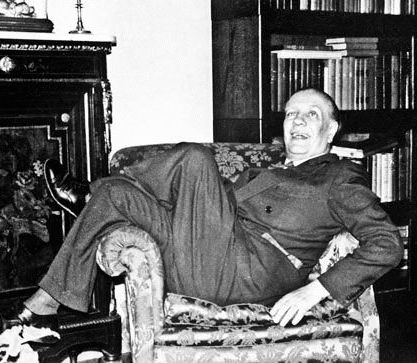Allardyce Nicoll, who teaches a course in the history of drama in Yale’s halls of wisdom, recently published a large and weighty in-octavo on the “similarities and differences” between secular theatre and film. To bemoan the accomplished ignorance of this volume, whose bibliography includes 914 books and articles as well as more than 200 periodicals, from the Los Angeles The Photodramatist to the Charlottenburg Das Publikum, amounts to mere insolence. However, (t)his ignorance is not only incredible or improbable: it is also real. Professor Nicoll, a man well-versed in libraries, erudite in files and sovereign in catalogues, is almost illiterate when it comes to box offices. He has rarely gone to the cinema; more precisely, he started watching movies only a few years ago.
About the silent era, about the period before 1929, he knows close to nothing; about the present one—awfully little. Thus we come to understand, without excusing or defending it, the omission of the works and names of Josef von Sternberg, Lubitsch, and King Vidor. As to his criterion, it suffices to transcribe this exemplary list of films which (according to him) justify the talkies as a genre: The House of Rothschild, The Private Life of Henry VIII, Queen Christina, David Copperfield, The Story of Louis Pasteur, Little Women, Catherine the Great, Man of Aran, The Informer. Of these nine redeeming films, two (The Informer and Catherine the Great) are good beyond doubt; one (Man of Aran) is a mere anthology of images; another (The Private Life of Henry VIII) is not insufferable; the remaining five justify—not to say, require—the burning down of the theatres which show them. . . . These two faults—awful taste and inadequate information—should be enough, according to good logic, to invalidate the book. Nevertheless, the facts are more complex: Allardyce Nicoll’s premises are debatable, but the conclusions he usually draws from them are not. On the other hand, his application of the conclusions may seem not particularly sharp. I will offer an extreme example. On page 149, the author correctly ascertains that, “in order to secure economy, visual images are preferable to words if these visual images are sufficient to convey the impression desired. Fundamental to the cinema is that which is presented to the eye; this must ever take chief place. Words spoken occupy a secondary position.”
He then applies his law to a certain Laurel and Hardy film [Bonnie Scotland, 1935]. Here is the plot: L. and H. come to take hold of a legacy in a Scottish village, which is a mirror and a paradigm of virtues most frigid. A duly Calvinistic and dried-up lawyer demands that they produce proof of their identity. Triumphantly, they take out some papers showing that they have been in prison, and they exultantly describe the dangers and mishaps of their escape and voyage as stowaways on a cattle boat. With a severity not unworthy of the lawyer, Professor Nicoll states that their tale represents nothing more than a “retrospective narrative,” that “retrospective narratives” are by nature dramatic, rather than cinematic, and, as a consequence, the film should have begun in jail and shown the couple’s escape, the chase after them, and their crossing of the Atlantic. Either I am entirely wrong or this objection is a true apotheosis of pedantry and formalism.
The mention of “retrospective narrative”—a literary device frequently found in the Homeric epics—brings us closer to an issue that the author discusses in the most interesting chapter of the book: the issue of cinematic time. Should artistic time correspond to real time? The answers are multiple. According to his own metaphor, Shakespeare put the accomplishments of many years into the turning of an hourglass; Joyce reverses the procedure and unfolds the one day of Leopold Bloom and Stephen Dedalus across the days and nights of his reader. More gratifying than the task of either shortening or lengthening a sequence is that of disarranging it, of jumbling up different times. In the realm of the novel, Faulkner and Joseph Conrad are those who have handled these reversals best; in film (which, as Allardyce Nicoll correctly notes, has unique means for producing such labyrinths and anachronisms), I recall only The Power and the Glory with Spencer Tracy. That movie, a man’s life story, intentionally and movingly omits the chronological order. The first scene is that of his burial. Another chapter approaches the interpolation of images which have metaphorical value. Chaplin shows a group of workers entering a factory; then a second pack, this time of sheep, entering a pen. “Ah, the human flock!” murmurs the enraptured audience, very satisfied to have recognized this cinematic avatar of a literary commonplace. (Modern Times, 1936). (Also, all feel they have attained the merit of an overarching maxim.) ✪
- Jorge Luis Borges, Film and Theathre, Sur 26
![[Futuristika!]](https://futuristika.org/wp-content/uploads/2020/12/futuristika.png)
